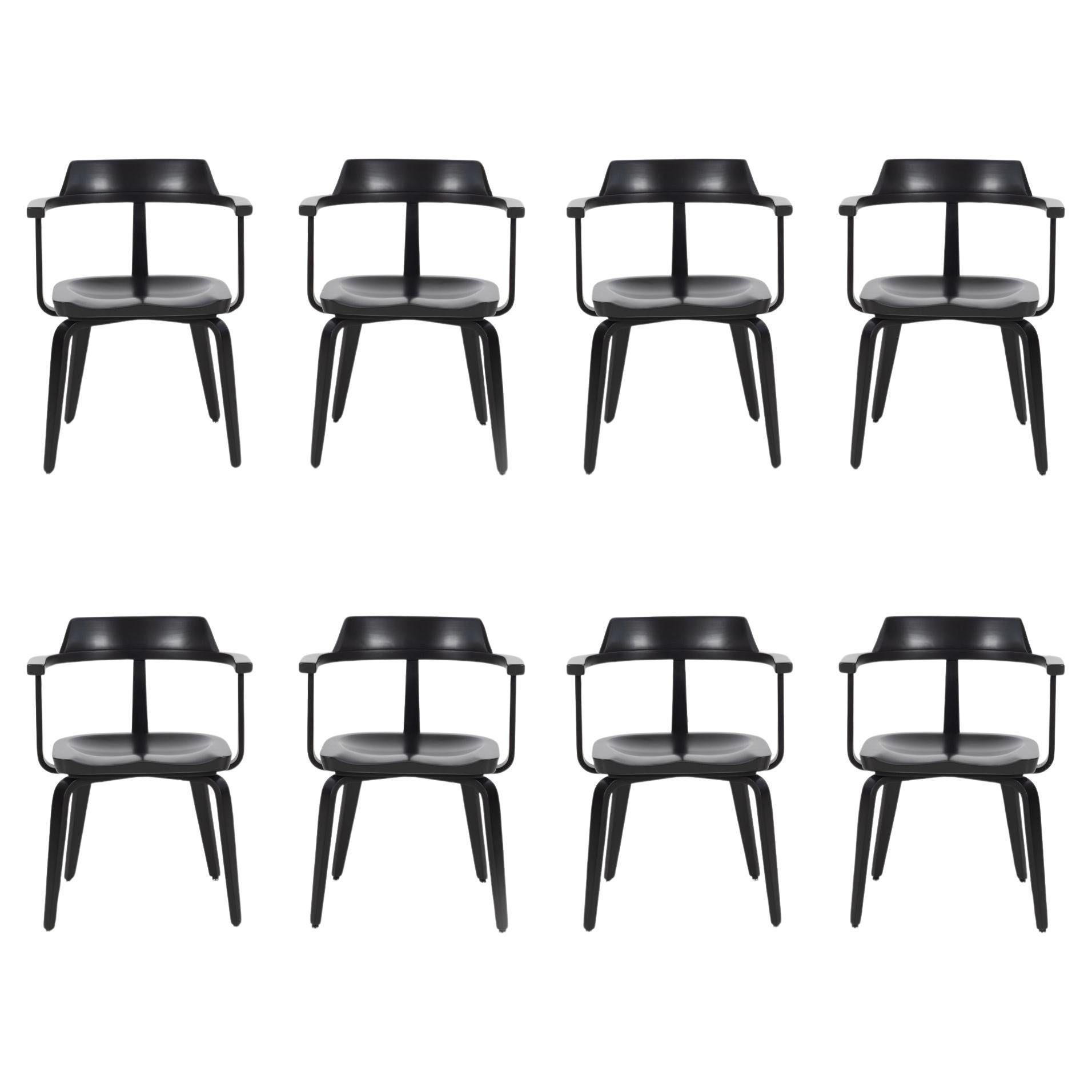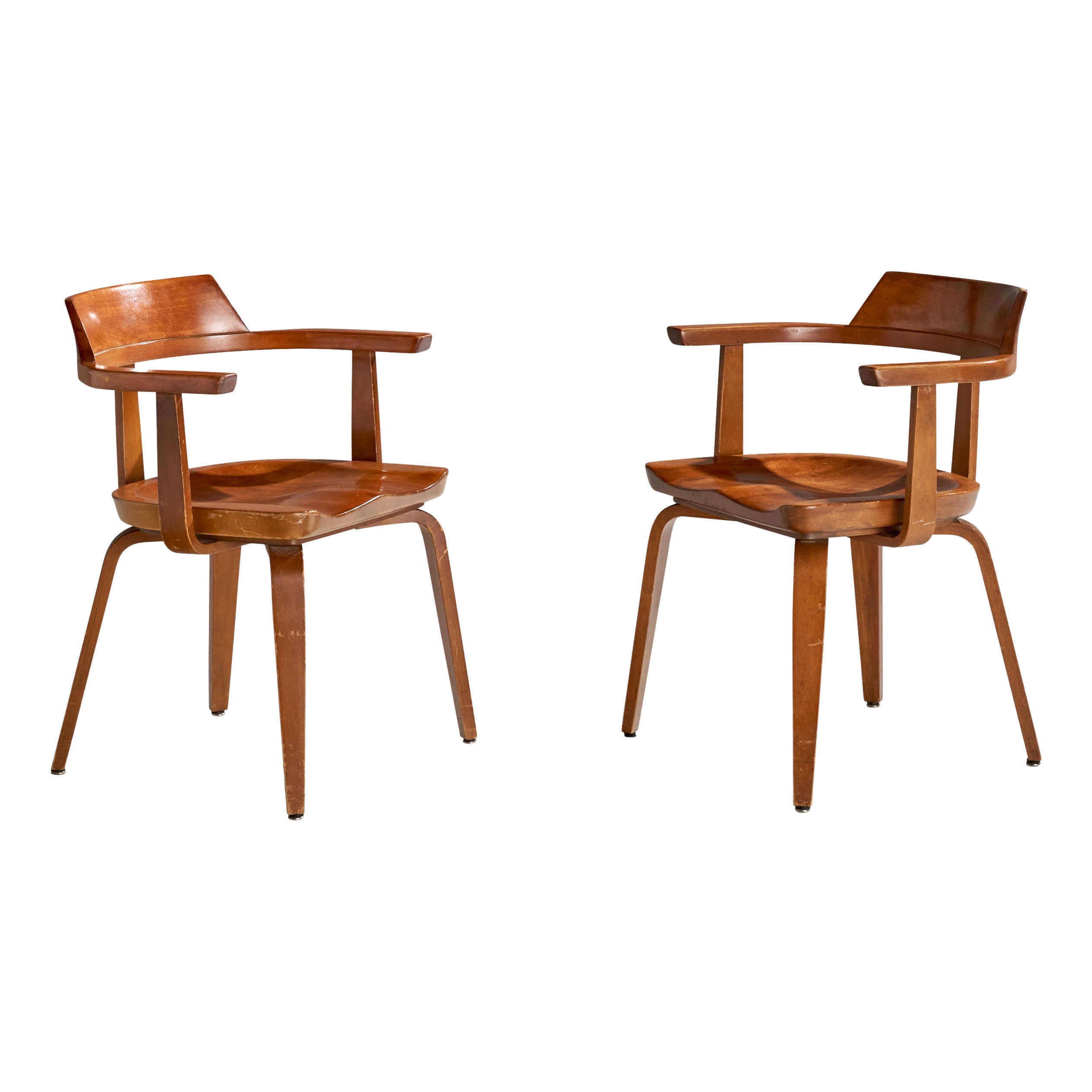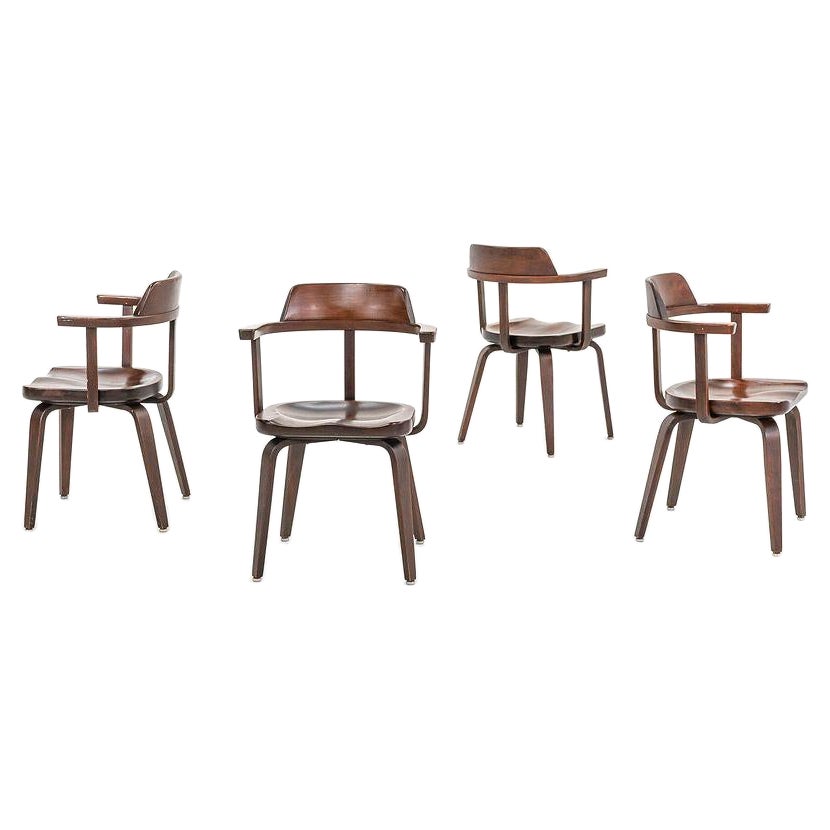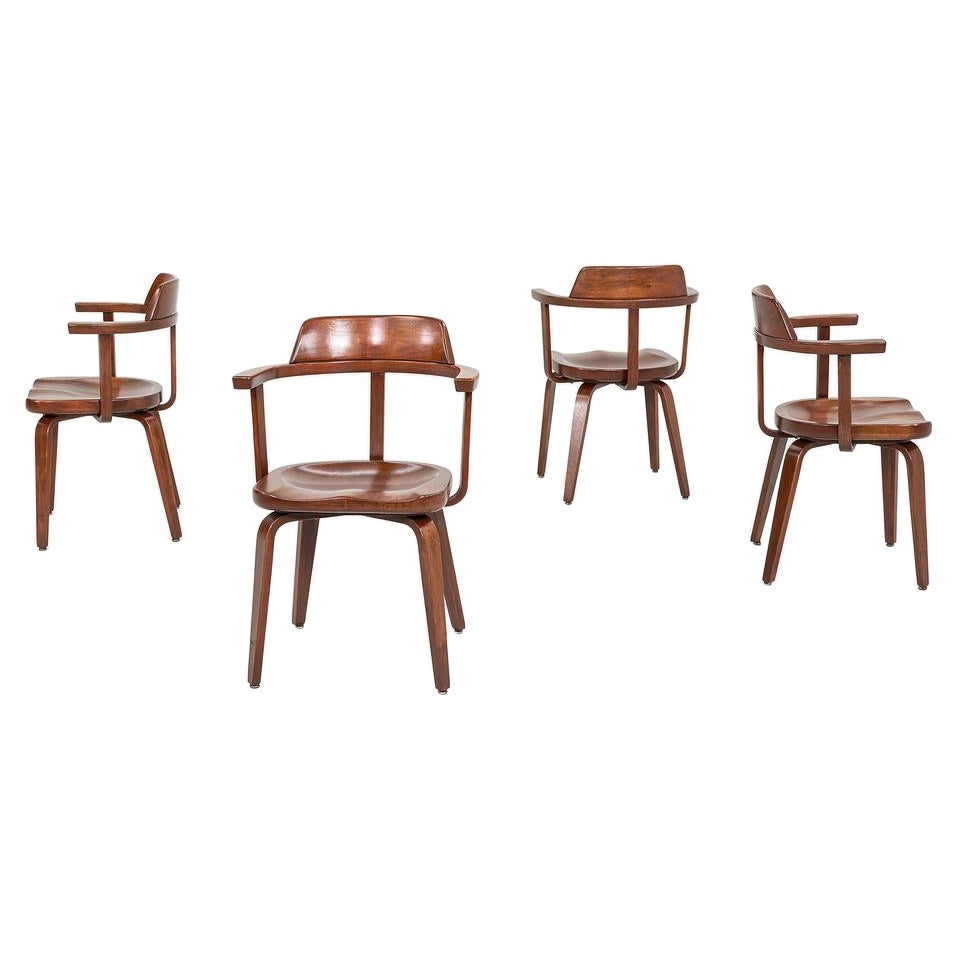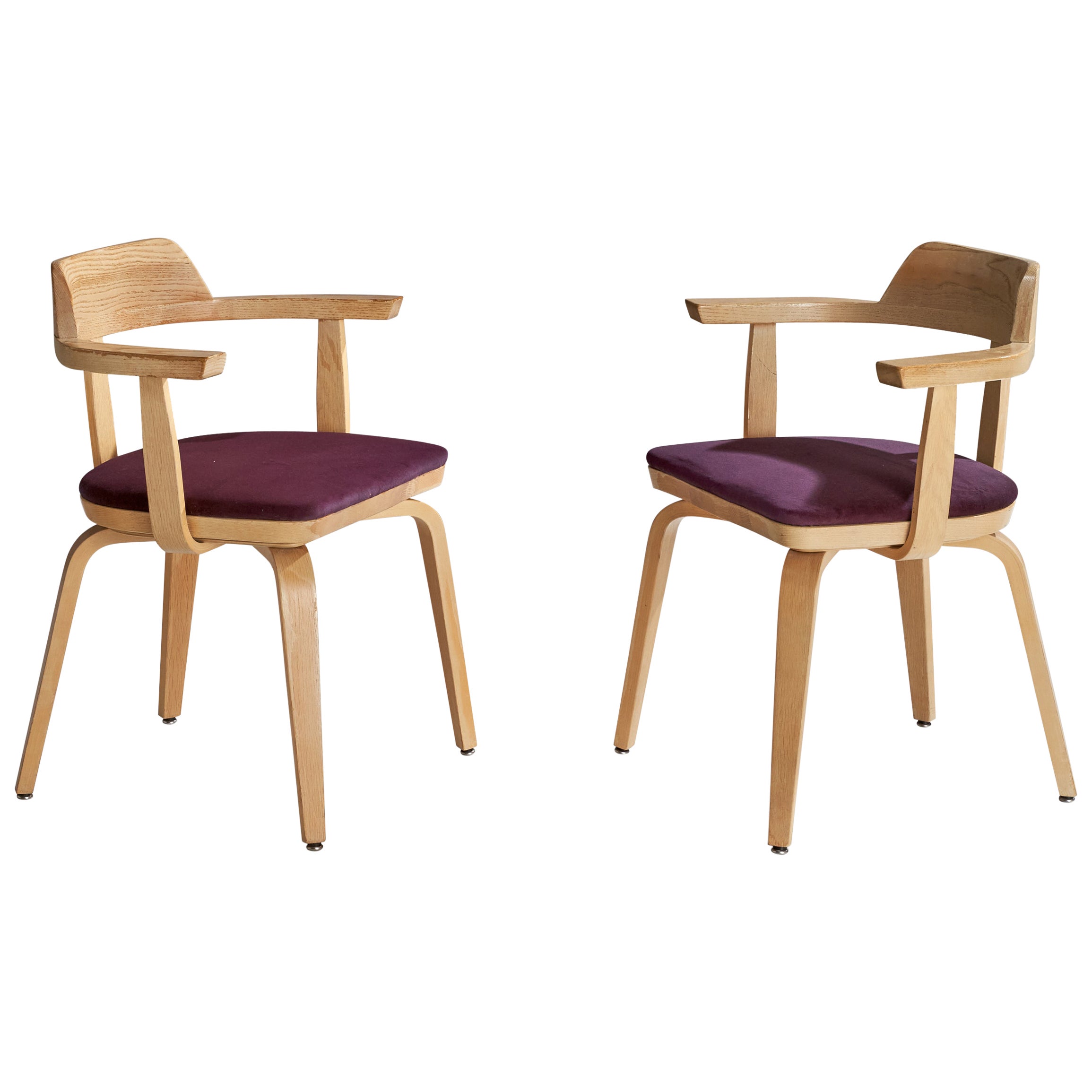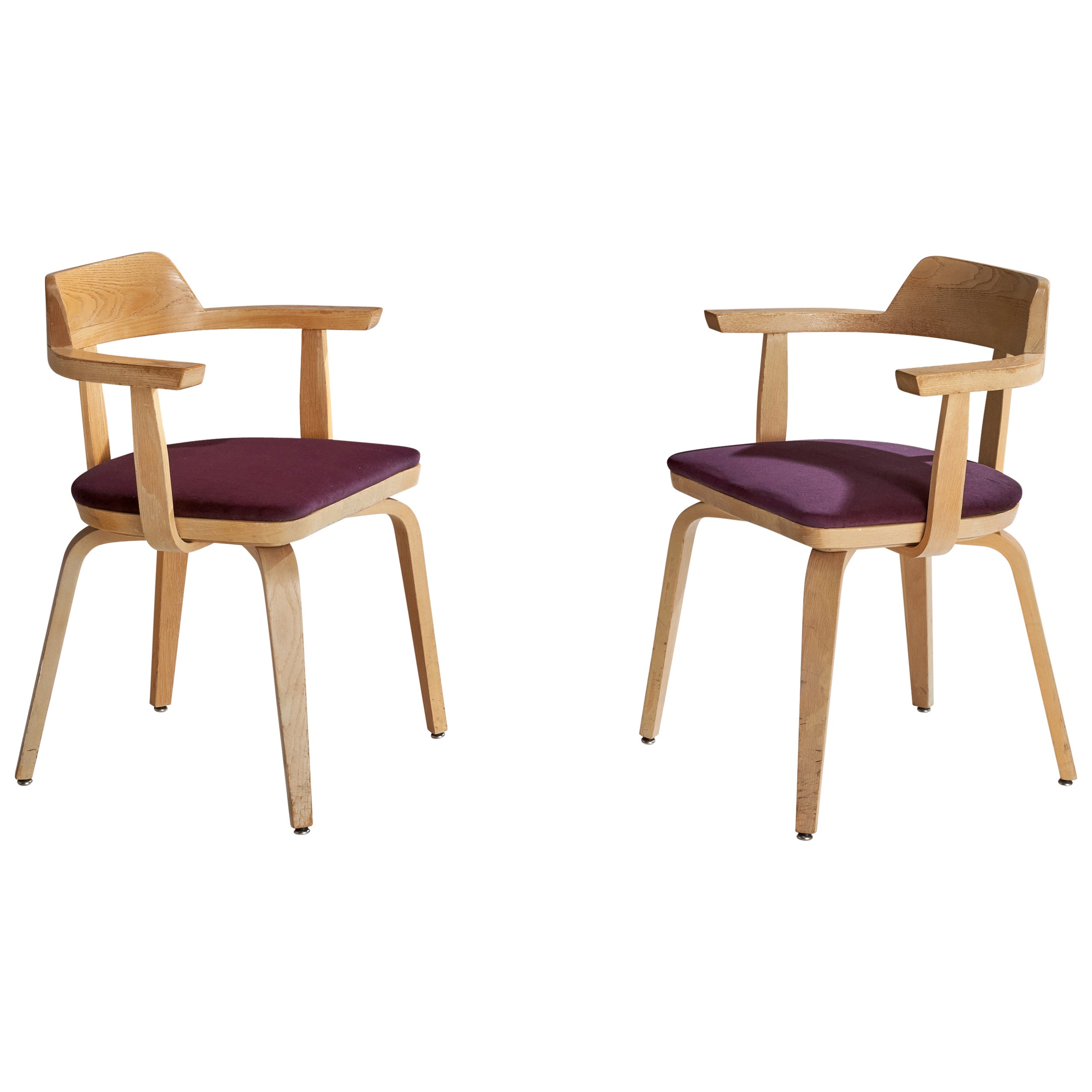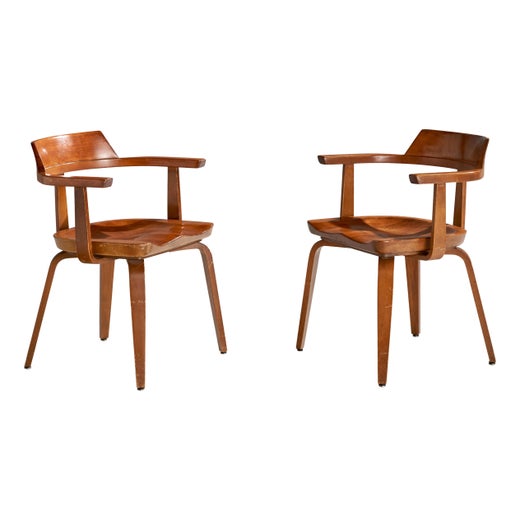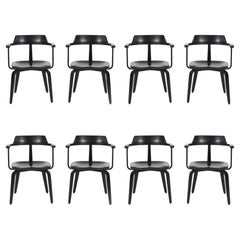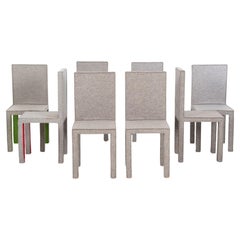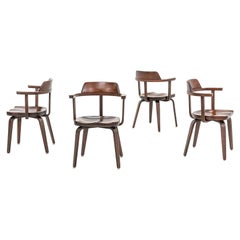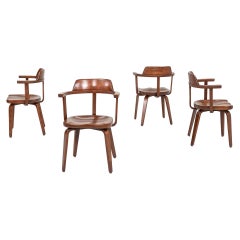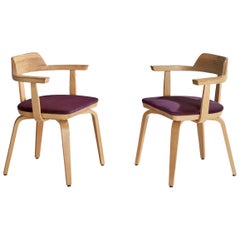Walter Gropius Armchairs for Thonet Set of Eight 1951
About the Item
- Creator:Thonet (Maker),Walter Gropius (Designer)
- Dimensions:Height: 29.5 in (74.93 cm)Width: 23 in (58.42 cm)Depth: 20 in (50.8 cm)
- Sold As:Set of 8
- Style:Bauhaus (In the Style Of)
- Materials and Techniques:Oak,Appliqué
- Place of Origin:
- Period:
- Date of Manufacture:1951
- Condition:restored, refinished.
- Seller Location:Chicago, IL
- Reference Number:Seller: C000032761stDibs: LU847444113612
Walter Gropius
As the founder of the Bauhaus — the German art and design school that was one of the chief crucibles of modernism — Walter Gropius had a central and enduring impact on the architecture and design of the 20th century and beyond. Along with fellow Bauhaus principals such as Ludwig Mies van der Rohe and Marcel Breuer, Gropius championed a philosophy of design focused on simplicity, efficiency and the inherent beauty of steel, glass and other industrial materials.
Born in Berlin, Gropius followed in his architect father’s footsteps and after completing his studies was employed by the brilliant proto-modernist designer Peter Behrens. Gropius’s early architectural work demonstrated many of the aspects that define the modernist aesthetic: ribbon windows, an emphasis on light and minimal decoration. Gropius became known primarily as a great organizer, writer and teacher. After military service in World War I, he developed concepts of what are now called the applied arts — a marriage of creative imagination with practical skill and technology. These notions drove Gropius’s founding of the Bauhaus in 1919. The school would welcome many of the great creators of the 20th century, including Paul Klee, Laszlo Moholy-Nagy and Josef Albers. After the independent-minded college fell afoul of the Nazi regime in the 1930s, Gropius immigrated to the United States, and finished out his years on the Harvard faculty.
Gropius produced far fewer furniture designs than his fellows on the Bauhaus faculty, but what he did make has a purity of form and spirit. As you will see from the works offered on 1stDibs, Walter Gropius never compromised his vision of design that encompassed beauty, creativity and the highest level of technical skill.
Thonet
For more than 180 years, Thonet — or Gebrüder Thonet — has produced elegant and durable tables and cabinets as well as chairs, stools and other seating that wholly blur the lines between art and design. Widely known as a trailblazer in the use of bentwood in furniture, the European manufacturer has reimagined the places in which we gather.
Noted for his skill in parquetry, German-Austrian company founder Michael Thonet received an invitation from Austrian Chancellor Prince Metternich to contribute Neo-Rococo interiors to the Liechtenstein City Palace in Vienna. The Boppard-born Thonet had honed his carpentry skills in his father’s workshop, where he carried out experiments with plywood and modified the Biedermeier chairs that populated the studio.
Thonet’s work for the chancellor raised his profile, and the cabinetmaker gained international recognition, including at London’s Great Exhibition of 1851, which featured works created by members of the Arts and Crafts movement as well as industrial products of the day. Thonet showed a range of furniture at the fair and won the bronze medal for his bentwood chairs. He incorporated his family’s company, the Thonet Brothers, with his sons in 1853.
Bentwood furniture dates as far back as the Middle Ages, but it is the 19th-century cabinetmaker Thonet who is most often associated with this now-classic technique. Thonet in 1856 patented a method for bending solid wood through the use of steam, and from there, the bentwood look skyrocketed to furniture fame. The works of renowned mid-century modern designers such as Alvar Aalto, Arne Jacobsen, and Charles and Ray Eames that put this technological advancement to use would not be as extensive or celebrated were it not for the efforts of the pioneering Thonet.
Considered the world’s oldest mass-produced chair, Michael Thonet’s ubiquitous Chair No. 14 demonstrated that his patented bentwood technology made it possible to efficiently produce furniture on an industrial scale. Now known as the 214, it won the German Sustainability Award Design for 2021, a recognition of the company’s commitment to environmentally responsible production.
Often called the Coffee House chair — the company’s first substantial order was for a Viennese coffeehouse — the No. 14 remains an icon. Thonet originally designed the chair in 1859, and it is considered the starting point for modern furniture.
The bentwood process opened doors — there were investments in machinery and new industrial processes, and the business began mass-producing furniture. By the end of the 1850s, there were additional Thonet workshops in Eastern Europe and hundreds of employees. Michael Thonet’s reputation attracted the attention of notable architects including Otto Wagner, Marcel Breuer and Ludwig Mies van der Rohe.
The No. 14 was followed by the No. 18, or the Bistro chair, in 1867, and the 209, or the Architect’s chair, of which Le Corbusier was a fan. (The influential Swiss-French architect and designer used Thonet furniture in his Pavillon de l’Esprit Nouveau at the 1925 International Exposition of Decorative Arts in Paris.)
Thonet’s chair designs also appeared in artwork by Toulouse-Lautrec, John Sloan and Henri Matisse in his Interior with a Violin Case. The noteworthy Thonet rocking chair remains a marvel of construction — in the middle of the 19th century, Michael produced a series of rockers in which the different curved parts were integrated into fluid, sinuous wholes. Thanks to Thonet, the humble rocker acquired something unexpected: style. It was captured in the paintings of Pablo Picasso, Pierre-Auguste Renoir and James Tissot.
Thonet is currently split into global divisions. Thonet Industries U.S.A. was acquired in 1987 by Shelby Williams and joined the CF Group in 1999, while the Thonet brand in Germany is owned by Thonet GmbH.
Find a collection of antique Thonet furniture on 1stDibs.
- ShippingRetrieving quote...Shipping from: Chicago, IL
- Return Policy
More From This Seller
View AllVintage 1950s Austrian Mid-Century Modern Dining Room Chairs
Oak
Vintage 1950s American Mid-Century Modern Dining Room Chairs
Upholstery, Cherry
Vintage 1950s German Mid-Century Modern Dining Room Chairs
Aluminum
2010s English Modern Dining Room Chairs
Wool, Beech
Vintage 1970s Italian Mid-Century Modern Armchairs
Brass
Vintage 1950s Italian Mid-Century Modern Dining Room Chairs
Faux Leather, Ash
You May Also Like
Vintage 1950s Austrian Bauhaus Armchairs
Birch
Vintage 1950s Austrian Modern Armchairs
Birch
Vintage 1950s Austrian Modern Armchairs
Steel
Vintage 1970s American Armchairs
Velvet, Oak
Vintage 1970s American Armchairs
Velvet, Oak
Vintage 1970s American Armchairs
Velvet, Oak
